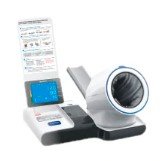Navigating Health Insurance Constraints in Phlebotomy Services: Strategies and Importance of Partnerships and Education
Summary
- Understanding health insurance constraints
- Strategies to navigate impact on phlebotomy services
- Importance of partnerships and education
Introduction
In the United States, the healthcare system is complex and constantly evolving. One of the challenges that medical labs and phlebotomy services face is navigating the impact of health insurance constraints. As insurance policies change, it can directly affect the services provided by medical labs and the phlebotomy process. In this article, we will explore strategies that medical labs can implement to overcome these challenges and continue to provide high-quality care to patients.
Understanding Health Insurance Constraints
Health insurance constraints refer to the limitations and Regulations imposed by insurance companies on healthcare services. These constraints can include restrictions on coverage, Reimbursement rates, and pre-authorization requirements. For medical labs and phlebotomy services, these constraints can impact the ability to provide certain tests, the frequency of testing, and the overall quality of care for patients.
Impact on Phlebotomy Services
Phlebotomy services play a crucial role in the healthcare system by collecting blood samples for testing and analysis. However, health insurance constraints can have a direct impact on these services in the following ways:
- Limitations on testing: Insurance policies may dictate which tests are covered, leading to restrictions on the types of blood samples that can be collected.
- Reimbursement rates: Lower Reimbursement rates from insurance companies can make it challenging for medical labs to cover the costs of providing phlebotomy services.
- Pre-authorization requirements: Some insurance plans require pre-authorization for certain tests, leading to delays in testing and potential disruptions in patient care.
Strategies to Navigate Impact on Phlebotomy Services
Despite these challenges, there are several strategies that medical labs can implement to navigate the impact of health insurance constraints on phlebotomy services:
1. Diversify Services
One way for medical labs to mitigate the effects of health insurance constraints is to diversify their services. By offering a wider range of tests and services, labs can reduce their reliance on insurance Reimbursement for phlebotomy services. This can help offset any potential revenue losses and ensure the sustainability of phlebotomy services.
2. Build Stronger Partnerships
Collaborating with Healthcare Providers, insurance companies, and other stakeholders can help medical labs navigate the complex landscape of health insurance constraints. By forming partnerships with key players in the industry, labs can work together to address challenges, negotiate better Reimbursement rates, and advocate for policies that support phlebotomy services.
3. Invest in Education and Training
Education and training are essential components of a successful phlebotomy program. By investing in ongoing education for phlebotomists and lab staff, medical labs can ensure that their team is equipped to navigate the changing requirements of health insurance constraints. Continuous training can also help improve the quality of phlebotomy services and enhance Patient Satisfaction.
Importance of Partnerships and Education
In conclusion, health insurance constraints can pose significant challenges for medical labs and phlebotomy services in the United States. However, by implementing strategies such as diversifying services, building stronger partnerships, and investing in education and training, labs can navigate these constraints and continue to provide high-quality care to patients. By working together with stakeholders and staying informed about insurance Regulations, medical labs can adapt to the evolving healthcare landscape and ensure the success of their phlebotomy services.

Disclaimer: The content provided on this blog is for informational purposes only, reflecting the personal opinions and insights of the author(s) on the topics. The information provided should not be used for diagnosing or treating a health problem or disease, and those seeking personal medical advice should consult with a licensed physician. Always seek the advice of your doctor or other qualified health provider regarding a medical condition. Never disregard professional medical advice or delay in seeking it because of something you have read on this website. If you think you may have a medical emergency, call 911 or go to the nearest emergency room immediately. No physician-patient relationship is created by this web site or its use. No contributors to this web site make any representations, express or implied, with respect to the information provided herein or to its use. While we strive to share accurate and up-to-date information, we cannot guarantee the completeness, reliability, or accuracy of the content. The blog may also include links to external websites and resources for the convenience of our readers. Please note that linking to other sites does not imply endorsement of their content, practices, or services by us. Readers should use their discretion and judgment while exploring any external links and resources mentioned on this blog.
